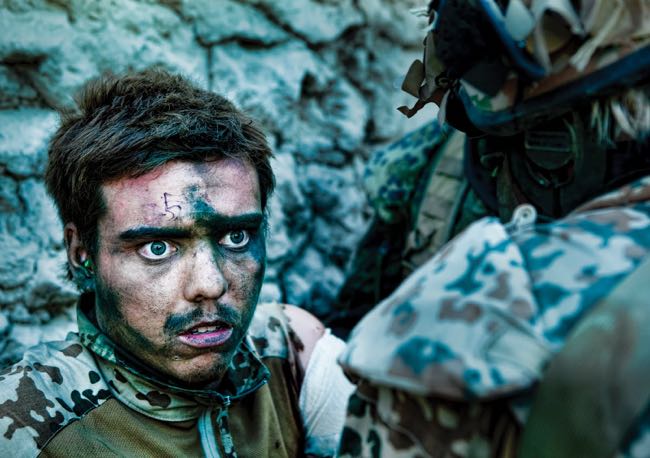By Ray Bennett
CANNES – Danish filmmaker Janus Metz’s gripping documentary feature “Armadillo”, named for a base in Afghanistan where soldiers from Denmark are fighting against the Taliban, already has created controversy in his homeland.
The film depicts six months in the posting of a handful of young soldiers and includes a frightening sequence in which a patrol faces a Taliban ambush. The hellish skirmish ends with a Danish hand grenade killing several insurgents. The soldiers move in and with the danger still grave they take no chances, firing round after round into the fallen enemy. Still high on adrenaline and relief, their debriefing involves boasting and laughter.
The documentary’s coverage of the incident has embroiled the Danish military in questions about appropriate behavior in combat situations.
That reality adds to the shocks and tension of Armadillo, along with the fact that the director and cinematographer Lars Skee were clearly risking their lives to get the story. While the men are Danish, there is a universality to their story and a vitality in the filmmaking that should see the documentary in demand around the world.
Edited skillfully by Per K. Kirkegaard, there are segments covering the departure of the new young soldiers, their induction into boring everyday life in an outpost on a far-flung desert, and a growing hardness as they confront what it means to take a life.
With no narration, just scenes of the boys talking, Metz manages to locate individual personalities in the ranks of newcomers and veterans alike.
The soldiers work out, call home, drink beer and watch porn. Then they go out to be shot at and bombed. Their conversations with the locals are all about how regular Afghans are caught between what they see as invaders and their own would-be tyrants. Either way, they stand to lose their animals, their crops, and their lives. And the soldiers cannot tell one Afghan from another.
It’s scary stuff and it gets even more so when the patrol gets ambushed. Despite drones that can show where the enemy is, planes that can place bombs on any grid point, and helicopters to retrieve the wounded, it remains a place where death lurks.
When the bombs go off and the bullets start flying, Metz and his cameraman provide a real-life vision of what a hurt locker is really all about.
Venue: Festival de Cannes, Critics Week; Director: Janus Metz; Director of photography: Lars Skree; Sound designer: Rasmus Winther Jensen; Music: Uno Helmersson; Editor: Per K. Kirkegaard; Producers: Ronnie Fridthjof, Sara Stockmann; Production: Fridthjof Film Doc; Sales: Trust Nordisk; Not rated; running time, 100 minutes.
This review appeared in The Hollywood Reporter.

